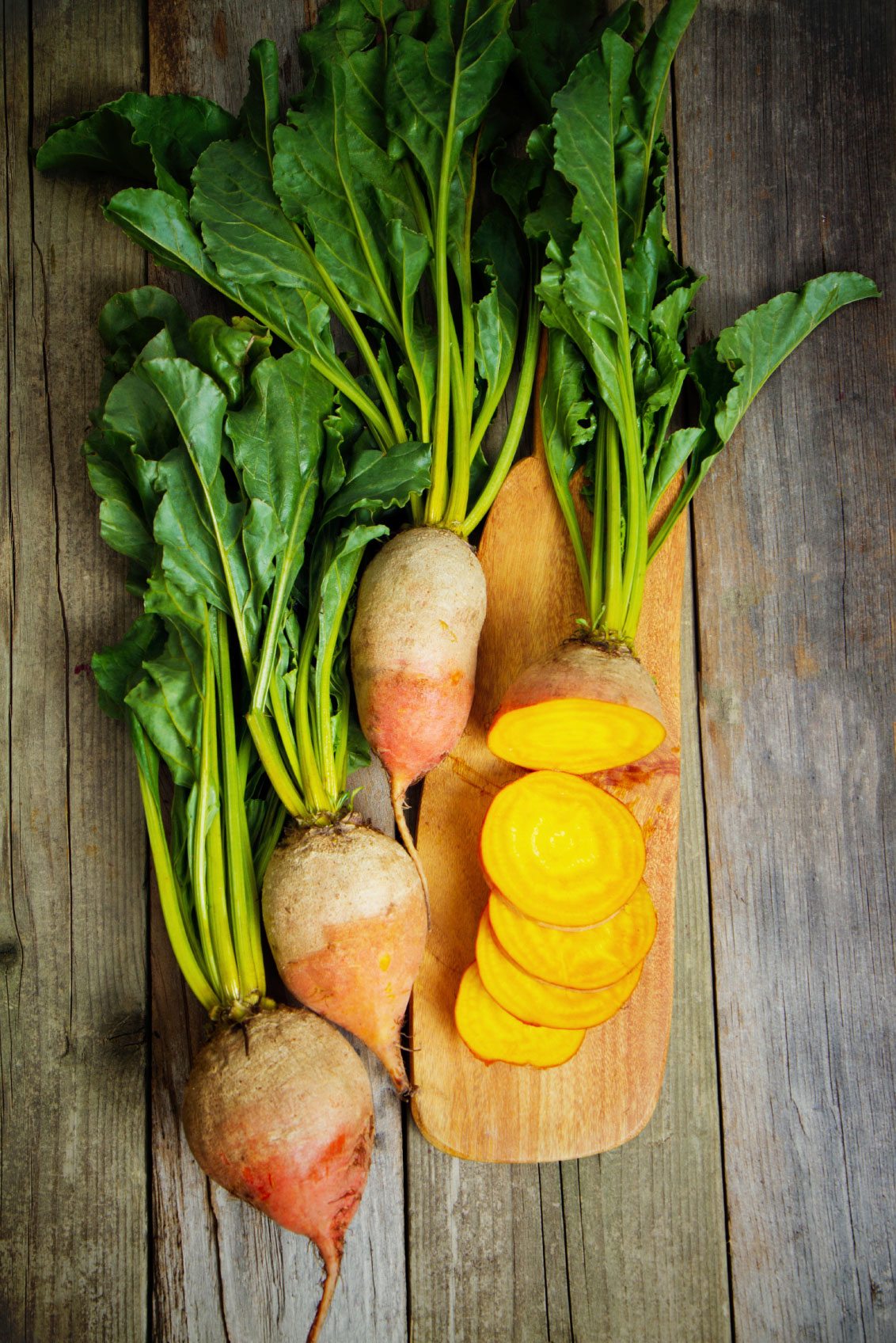
I love beets, but I don't love prepping them to be cooked. Invariably, that lovely scarlet beet juice ends up on something or on someone, like me, that can't be bleached. Also, I'm not fond of the way it imparts its color to other roasting veggies. Fear not. There is another beet out there-- the golden beet. So, what are golden beets? Read on to learn more about growing gold beets.
What are Golden Beets?
Golden beets are simply a beet variety lacking that vibrant red pigment. They are bred to be golden in color, which is a wonderful thing for this beet lover who doesn't like the mess. Golden beets and white beets are said to be sweeter and milder than their red counterparts. Intriguing, yes? So how do you grow golden beets?
How to Grow Golden Beets
There's really no difference when growing gold beets than red beets. Both cultivars are fairly frost tolerant and can be planted in the garden 30 days before the frost-free date in your region, or you can start them indoors to get a jump start on their 55 day maturation period. Choose a site for planting that is sunny with light, well-draining soil amended with organic matter. Beets like soil with a pH of between 6.5 and 7. Work a fertilizer containing both nitrogen and phosphorus prior to planting. Rake out any large rocks or clods since they affect the growth of the beet root. Optimal soil temps for beet germination are between 50 and 86 degrees F. (10-30 C.). Sow the seeds thinly, 1 to 2 inches (2.5-5 cm.) apart at a depth of ½ inch (1 cm.) in rows a foot (31 cm.) apart. Cover the seeds lightly with soil and sprinkle with water. Growing golden beets germinate less successfully than their red cousins, so plant extra seeds. At this juncture, you may want to cover the area with a floating row cover. Keep the fabric moistened for 5 to 14 days until seedlings emerge. Thereafter, you can keep it loosely supported over the plants to discourage insect marauders. Once the seedlings are about 1 to 2 inches (2.5-5 cm.) tall, thinning should commence. Remove the smallest, weakest looking plants by cutting, not pulling, which may disturb the roots of the neighboring seedlings. Thinning is important to allow the developing plant room to grow. Also, beet seeds are not actually a single seed. It is a cluster of seeds in a dried fruit, so it is very likely that multiple seedlings will come up from a single “seed.”
Caring for Golden Beet Plants
When caring for golden beet plants, keep the plants moist. Water deeply and don't let the soil dry out. A 1 to 2 inch (2.5-5 cm.) layer of mulch around established plants will aid with this. Keep the area weed free and spray the plants once or twice with a foliar, seaweed-based fertilizer. Fertilize mid growing season with a well-balanced organic fertilizer.
Harvesting Golden Beets
Harvest golden beets about 55 days after seed has been sown. Roots should be at least 1 inch (2.5 cm.) across. When harvesting golden beets, pull alternate plants to allow remaining beets to grow a bit larger. Use a spade to gently lift out the roots. Golden beets will keep in the refrigerator for up to two weeks, but the tender, delicious beet tops should be eaten shortly after harvest.
Sign up for the Gardening Know How newsletter today and receive a free copy of our e-book "How to Grow Delicious Tomatoes".

Amy Grant has been gardening for 30 years and writing for 15. A professional chef and caterer, Amy's area of expertise is culinary gardening.
